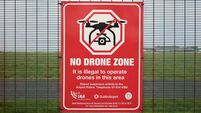All aboard ... for a longer journey
Since the 1990s, Irish Rail has spent €1 billion upgrading track, signalling and fencing while the Government is planning to spend €5.5bn on further improvements before 2017.
Yet a comparison of this year’s train timetables with those from 1974, 1993 and 1994, reveals journeys on the same routes are taking longer today than a generation ago:













